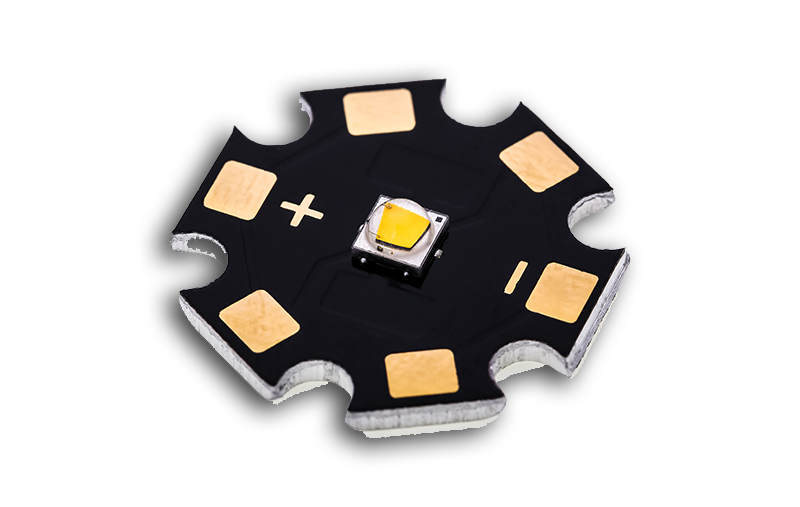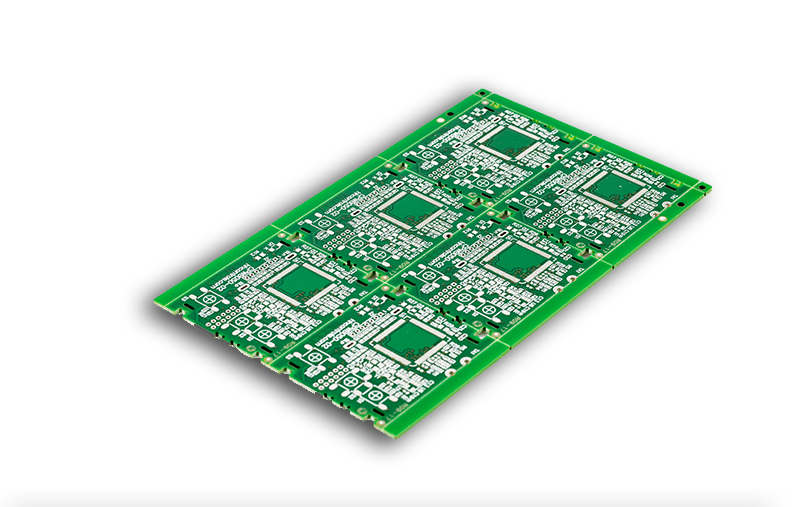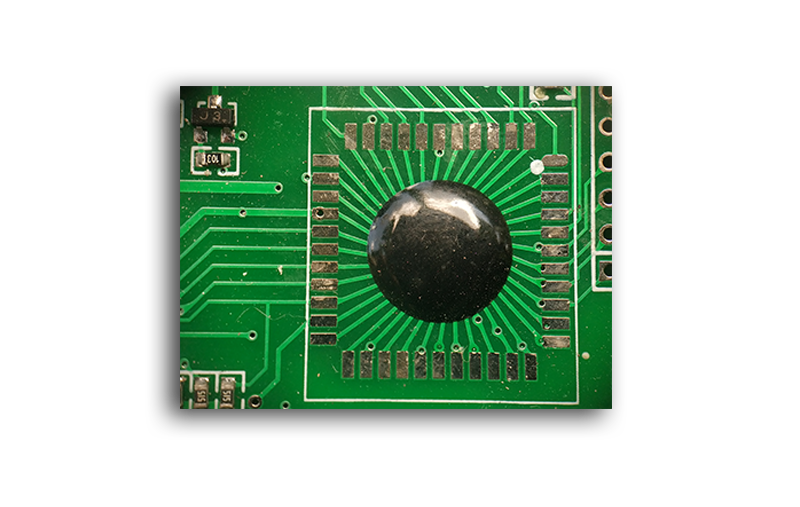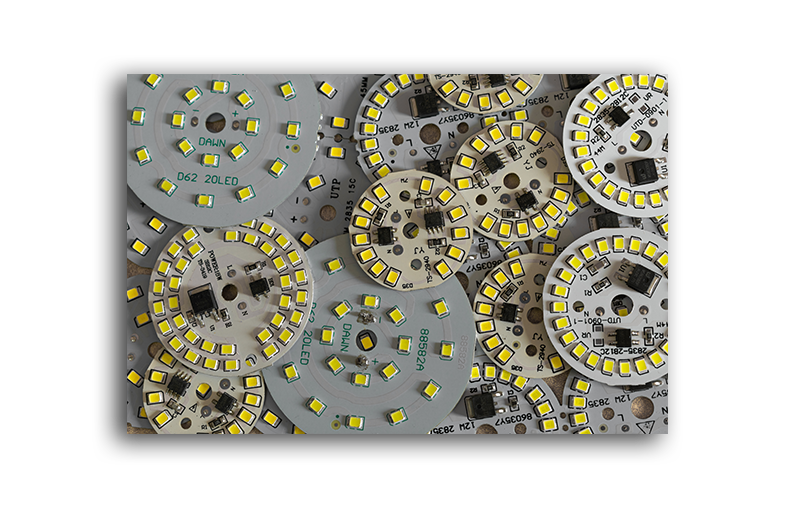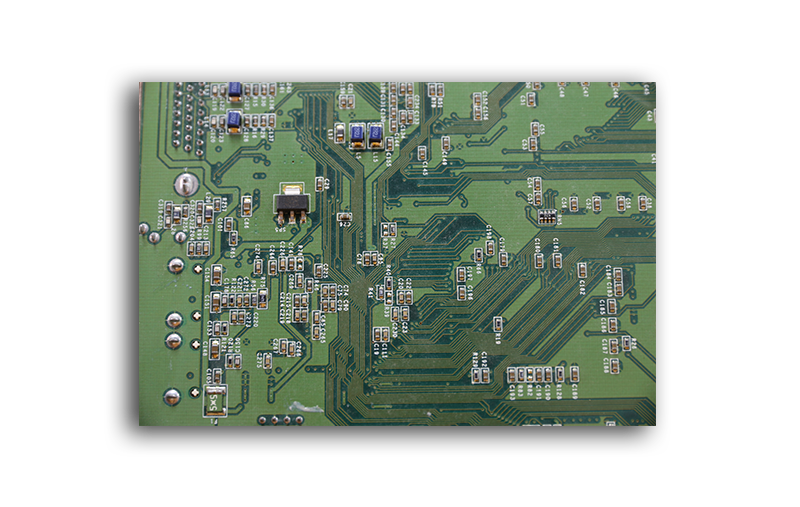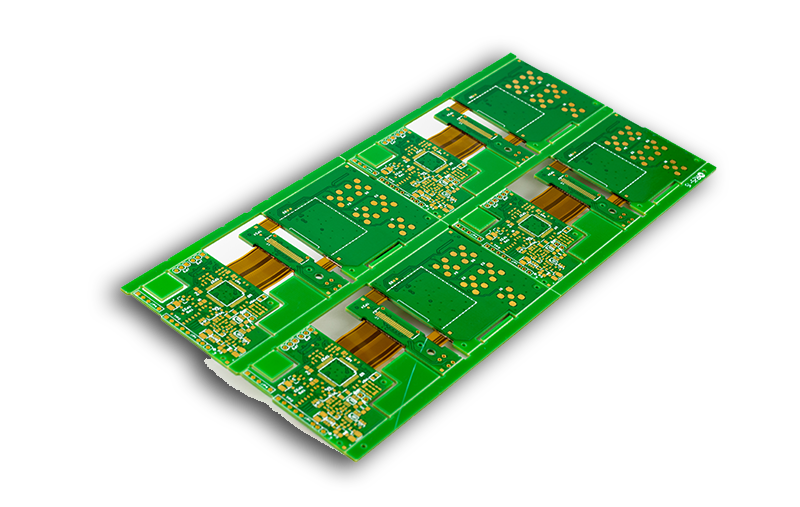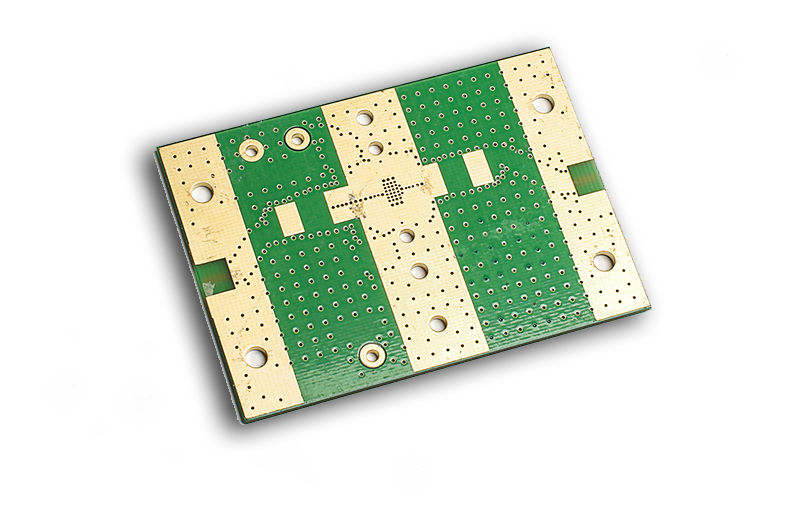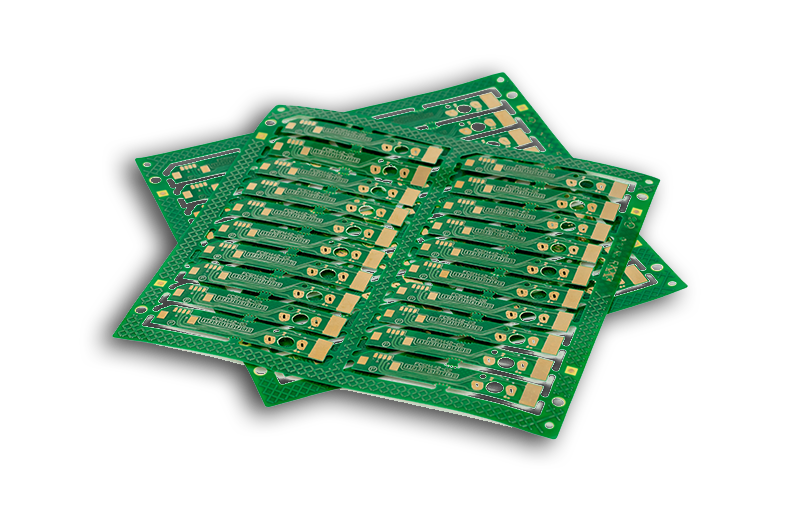Aluminum PCBs
- Aluminum PCBs have a layer or layers of silkscreen, solder mask, and copper coat.
- The base material of aluminum PCB comes with the regular FR4 and an aluminum core.
- Also, aluminum PCBs are usually an ideal solution for tight-tolerant and high-power devices.
- We have professional standard reviewers that ensure strict quality control measures in every production process.
- We leverage advanced testing technologies, such as AOI Test, E-Test, X-RAY, and Impedance Control.
- We have an in-house PCB design and assembly process review, which ensures high-quality control. We are committed to helping you get the highest quality products and services at competitive prices.
- We use a wide range of PCB material options, such as FR4, High TG FR4, Rogers PCB, Metal-based PCB, and High-frequency Materials.
- We have a superior customer care department, which supports person-to-person services. Our customer care department is flexible and approachable if you want to make any updates before the production process begins.
What Are Aluminum PCBs?
They are PCBs that have a layer or layers of silkscreen, solder mask, and copper coat. Also, these aluminum PCBs come with metal substrates instead of a plastic substrate or fiberglass material.
The base material of aluminum PCB comes with the regular FR4 and an aluminum core. Also, aluminum PCBs are usually an ideal solution for tight-tolerant and high-power devices.
Hence, the PCB comes with a thermal layer that is clad and efficiently dispels heat. In summary, aluminum PCB’s presence helps to cool down components and increases electronic devices’ performance.
Why Aluminum Is a Great Unit for Circuit boards?
The reason is simple!
Aluminum is ideal for dissipating heat from essential electronic components, and it helps to minimize any detrimental effects that may occur on the PCB.
Also, aluminum material offers great durability and strength to electronic appliances, which fiberglass and ceramic bases cannot handle.
The Performance Scope of Aluminum PCBs
Thermal Dissipation
- Normally, PCB substrates like CEM3 FR4, etc., are not good thermal conductors. Coupled with that fact, the heat produced by electronic devices usually gets distributed rapidly. So, this results in the electronic components facing failure and possible damage due to the high temperature.
- But with aluminum substrates, it’s a different story entirely because they effectively solve the thermal dissipation issue.
Thermal Expansion
- Because Aluminum PCBs efficiently provide a solution for the thermal dissipation issue, PCB components’ thermal contraction and expansion issues with various substances get easily improved.
- That way, the electronic components' reliability, durability, and the entire machines are certain. In short, aluminum substrate PCBs do a great job solving the surface mount technology thermal expansion and contraction issues.
Dimensional Stability
- Aluminum PCBs have higher dimensional stability than the insulating component of the regular PCB. So, when it gets heated from 30 °C to 140 ~ 150 °C, its dimensional change remains at 2.5 ~ 3.0%. But the dimensional stability tends to dwindle when heated at a higher temperature.
Other Performance
- The aluminum PCB comes with a shielding effect that helps protect the circuit board. Also, it helps to boost heat resistance and cut the cost of production and labor.
The Build Layout of Aluminum PCB
The structure or assemblage of aluminum PCBs comprises of four layers, namely:
Copper Foil Layer
- This layer is usually thicker than the regular CCLs, which measures about 1 oz – 10oz. Also, a thicker copper layer equally means it possesses a bigger current carrying capacity.
Dielectric Layer
- The dielectric layer It has a part with thermal conductivity, and it’s usually about 50 μm to 200μm in thickness. Plus, the layer has a relatively low thermal resistance, and it’s ideal for its applications.
Aluminum Base
- This aluminum base is the third layer—made from an aluminum substrate. So, its thermal conductivity level is very high.
Aluminum Base Membrane Layer
- This layer is usually selective—compared to other layers. It helps to protect the aluminum surface from unnecessary scratching and etching. However, it comes in two types; one is an anti-high temperature usually about 250 degrees. And the other is lower than 120 degrees.
The Types of Aluminum PCBs
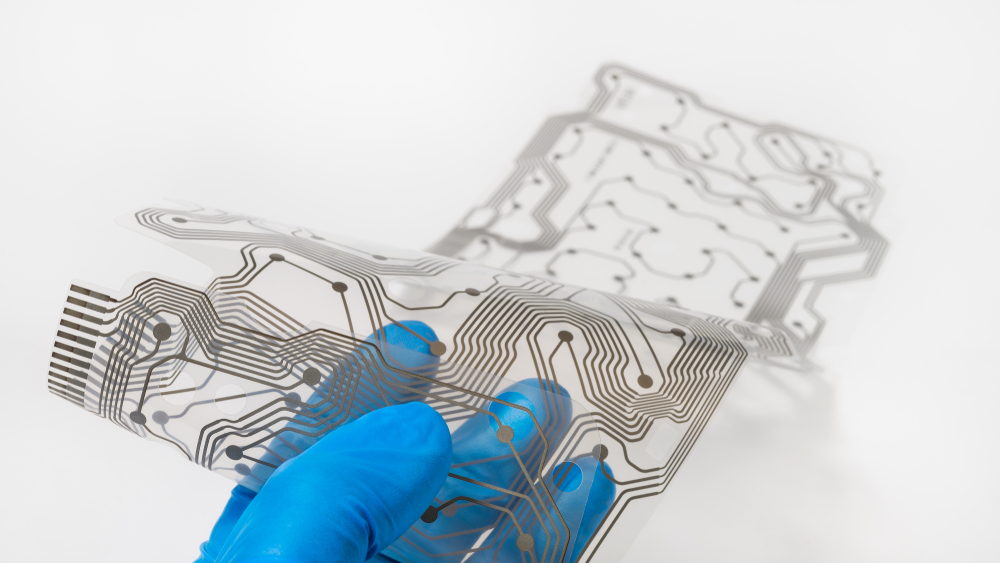
Flexible Aluminum PCBs
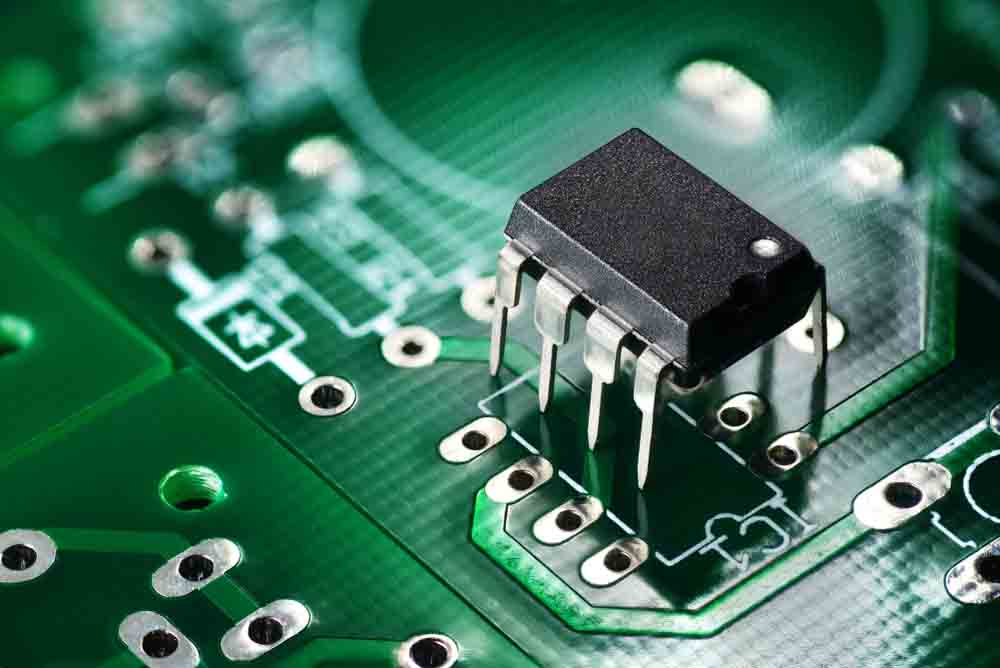
Through-hole Aluminum PCBs
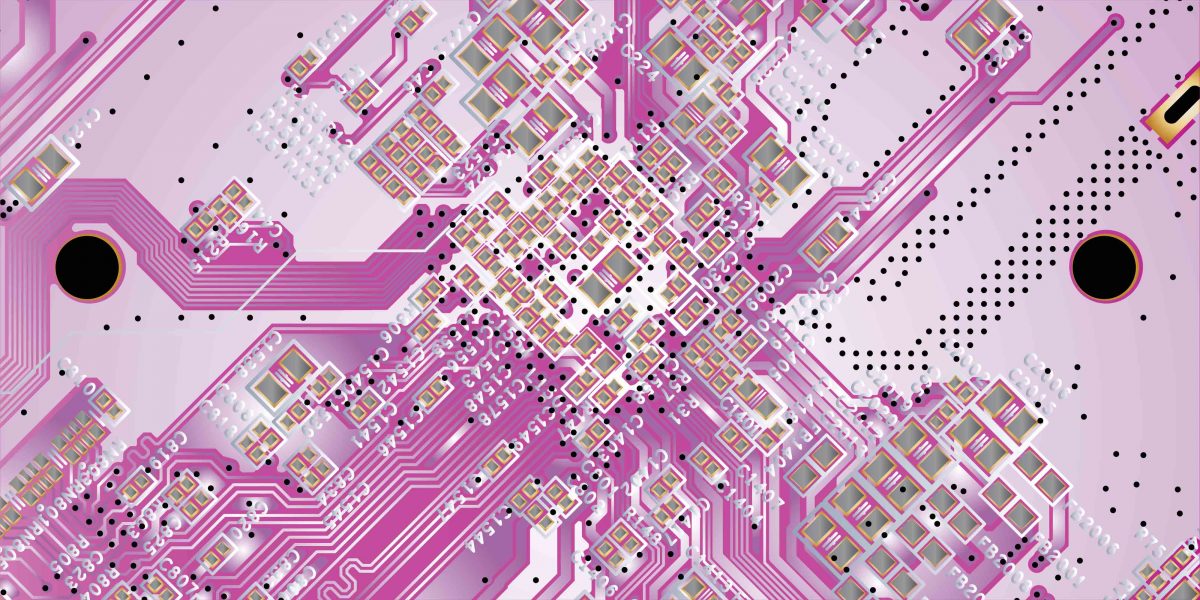
Multilayer Aluminum PCBs
The multilayer aluminum PCBs make up multilayers of dielectric materials that have thermal conductive characteristics.
Therefore, these aluminum PCBs are great heat dissipation agents designed for sophisticated solutions.
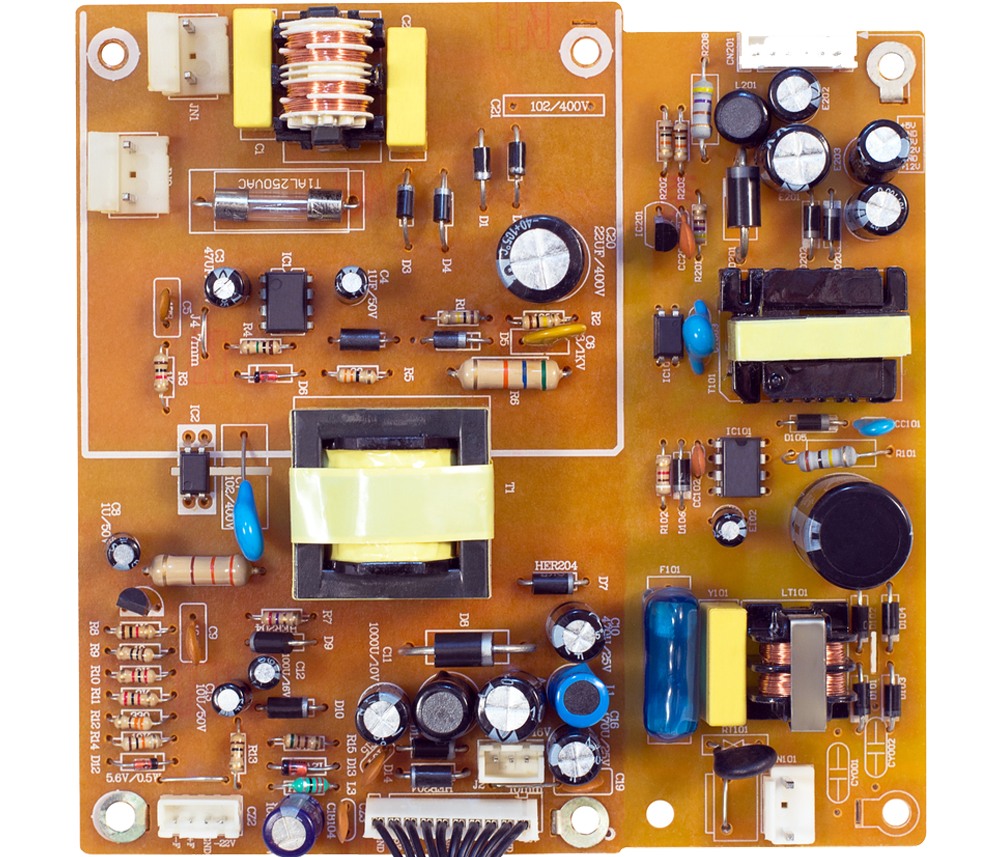
Hybrid Aluminum PCBs
What is the Production Process of Aluminum PCBs?
The production process of aluminum PCBs involves a thin dielectric layer that’s an electric insulator. But this insulator gets laminated between the metal base and copper foil.
Then, the copper foil gets etched into a PCB pattern, and the metal base extracts heat.
- Prototype orders placed within 24 hours
- Normal lead time (5-7 working days for some PCBs prototypes and small batch production)
- Faster lead time (48 hours for some PCBs prototypes and small batch production)
Why Are Aluminum PCBs Beneficial?
Environmentally Friendly
- One remarkable feature of aluminum is its recyclable nature, and it’s non-toxic. Hence, using the metal for production promotes energy conservation thanks to its ease of assembly. So, when PCB suppliers use aluminum, it preserves environmental health.
Light-weight
- Aluminum PCBs are quite durable and lightweight metals. Plus, the metal contributes to the resilience and strength of a PCB. And it doesn’t add extra weight.
Highly Durable
- If you have a product that requires strength and durability, you can count on Aluminum. And it’s because aluminum poses as a sturdy base material. So, it can reduce breakage that may occur during everyday use, production, and handling.
Cost-Effective
- You can find aluminum in different climates. So, it means you can easily mine and refine it. Hence, aluminum is a more cost-effective option compared to other metals. Plus, it also means that manufacturing products with aluminum are less expensive.
Better Heat Transfer
- Your electronics may suffer from severe damage if there are extreme temperatures. And that’s a good reason why it’s ideal to opt for a material that can transfer heat effectively. Aluminum is a great example of metals that help transfer heat away from vital parts. As a result, it reduces the harmful effect that the circuit board may have gotten.
Production Challenges of Aluminum PCBs and Its Resolutions
Copper Etching
- Most times, aluminum PCBs come with copper foil, which is usually thicker. So, if the copper foil appears to be more than 3oz, it's crucial to do a width compensation for the etching.
- If for some reason, the PCB doesn’t follow the demand of design after etching, the trace width will go out of tolerance. So, it's necessary to design the trace width compensation accurately. Plus, it's also important to control the etching process during production.
Solder Mask Printing
- The difficulty of solder mask printing of aluminum PCB usually comes up because of the thick copper foil. This problem occurs because of the thickness of the trace copper. Hence, the trace copper thickness also causes image etching—which causes a large difference between the baseboard and trace surface.
- When this happens, it makes solder mask printing difficult. So, it’s crucial to use the two-time solder mask printing. Also, it’s vital to use quality solder mask oil during the process. Or you can solder the mask after you do a resin filling first.
Mechanical Manufacturing
- During mechanical manufacturing, you could encounter processes like molding and v-scoring, mechanical drilling, etc. These processes are usually on internal via . As a result, it causes a reduction in electrical strength.
- So, it’s best to use the professional milling cutter and electric milling for low-volume products. Plus, it’s ideal for adjusting the drilling parameter—to avoid the generation of burr. Also, it will aid your mechanical manufacturing.
The Applications of Aluminum PCBs
You can use aluminum PCBs in the following:
Industrial vehicles: lighting conversion system, ignition, automatic safety control system, voltage regulator, etc.
Power supply equipment: conditioner, stabilizer, DC-AC adapter, etc.
Switches: semiconductor devices, motor controllers, semiconductor devices, etc.
Lighting: energy-saving LED lights.
Power modules: rectifier bridges, inverters, solid relays, etc.
Communication electronic equipment: filter electric circuit, high-frequency amplifiers, etc
Audio equipment: power amplifiers, input and output amplifiers, preamplifiers, balanced amplifiers, audio amplifiers, etc
Computer: motherboard, power supply device, floppy disk drive, etc.
Electronic control: different components in the circuit, relays, transistor base, etc
Office automatic equipment: motor driver, etc
The Production Capabilities of
WellPCB
-
FeaturesCapabilities
-
Material:FR4 covering, aluminum core, copper core
-
Surface finishing:ENEPIG plating, immersion gold, immersion silver, hard gold, OSP
-
Testing:A.O.I testing and Fly Probe Testing
-
Thermal conductivity:2.0 W/(m*k), 1.0W/(m*k)
-
Board thickness:0.4-3.2mm
-
Silkscreen:Black, white
-
Build time:Three days
-
Solder mask:Black, matte green, green, yellow, red, white, purple, matte black
-
Base material:Rogers, flex, aluminum, flex-rigid, FR4, etc.
-
Via process:Vias not covered, tenting vias, plugged vias.
-
Lead time:2-3 days
-
Min. hole size:0.8mm
-
Finish copper:1-4oz
-
Min. spacing:4mil
Why Should You Choose Us as Your Aluminum PCB Manufacturer?
WellPCB has been in the business of producing high-quality aluminum PCBs for years. So, you can count on our experience to deliver top-notch custom-designed aluminum PCBs that will meet all your requirements. We can also handle your orders effectively at an unbeatable price on the market. Feel free to contact us for a free online quote, and we can get the ball rolling.
FAQs
1. What needs to consider during the manufacturing process of aluminum circuit boards?
Well, you need to consider aluminum design/circuit design and aluminum plate. More importantly, the substrates, including Insulated Metal Substrate, aluminum alloy substrate.
Then the circuit layer (layers of circuitry), such as an aluminum base layer, an insulating layer, Aluminum membrane layer, and conductive layers. Plus, physical properties are also essential factors to Aluminum PCBs, like thermal performance, thermal efficiency, operating temperature, etc.
Also, your need for Aluminum PCB Applications matters. Whether for large-scale applications, High-frequency aluminum PCB or LED applications, heat sinks, which will have an effect on Aluminum PCBs.
Furthermore, you should also pay attention to the conductive dielectric of aluminum boards, basic structure, and vital components of aluminum core PCBs. Besides, manufacturing costs of the Printed Circuit Board.
Our Certifications
Here are the certificates we have:
IATF 16949:2016 ISO 9001:2015 ISO14001:2015 ISO13485:2016 UL Also, all our products follow the IPC & ROHS Standards. More importantly, we always strive to manufacture high-end PCB products.
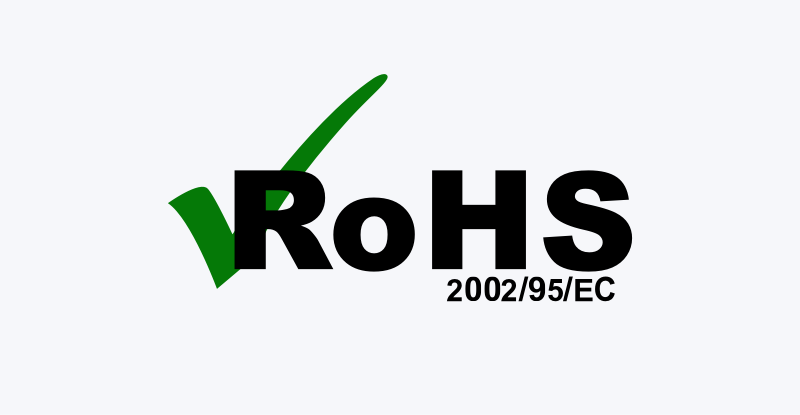
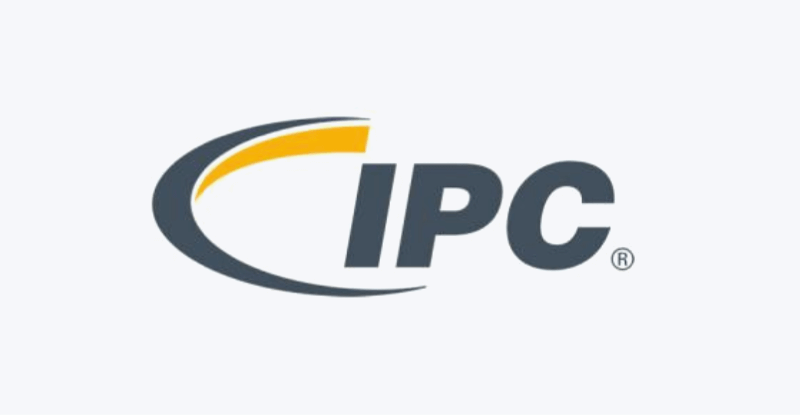
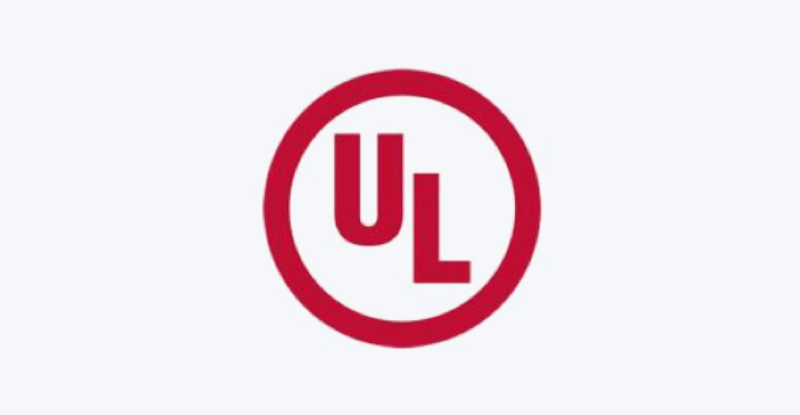

PCB Product Show
